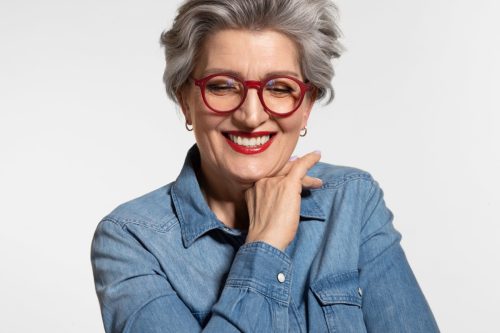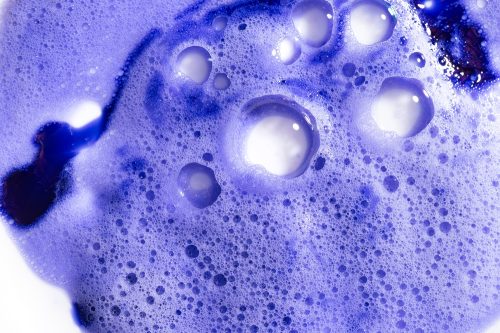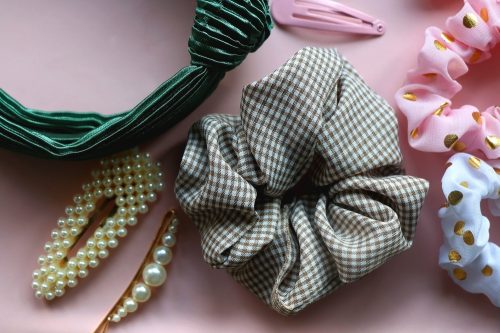6 Tips for Making Short Gray Hair Look Stylish, Experts Say

In case you hadn’t noticed, gray hair is no longer something to hide or be ashamed of—many women are ditching the dye and flaunting their natural silver locks. In fact, according to celebrity hairstylist Clyde Haygood, gray is one of the most requested salon hair colors nowadays. More specifically, short gray hair—think Meryl Streep as Miranda Priestly in The Devil Wears Prada—is right on trend.
“Not only is the cool-toned color sought after by Gen Zers and millennials, it has made a splash on fashion runways,” he says. “Baby boomers, who once would have colored their hair to the bitter end, have now embraced what nature gave them. People are also making statements with their naturally gray hair at a much younger age.”
Katie Emery is just one person who jumped on this trend. The hair expert and blogger behind Katie Goes Platinum says letting her hair go gray is one of the best decisions she’s made. “It’s so much more beautiful and unique than I ever could have predicted,” she tells Best Life.
Jamie Lee Curtis, Helen Mirren, Jane Fonda, and Glenn Close—these are just a few of Hollywood’s most beautiful and powerful women who are wearing their hair short and gray these days. But to make the most of your short gray hair, heed these go-to tips and tricks from professional stylists.
RELATED: 10 Best Short Haircuts for Women Over 60, Stylists Say.
1
Try adding highlights or lowlights.

Highlights aren’t just for blondes, brunettes, and redheads. And when you have short gray hair, this works especially well because even just a bit of contrast can add a major pop.
“Subtle highlights add dimension to a gray cut,” says Terri Rehkopf, hair stylist/educator and founder of Ippodaro Natural Salon.
Haygood also notes that lowlights can create visual dimension and depth as well: “This should be done with straight black or a charcoal gray so as not to cloud the natural color.”
Keep in mind, too, that finding your most flattering shade of gray depends on your skin tone. “A gray that’s too dark can be harsh against the skin and complexion while a gray that’s too light can drain color away from your face, making you look tired,” explains Haygood.
2
Go for a pixie cut.

Kate Ross, a hair specialist at Irresistible Me, suggests trying a sassy pixie cut if you have gray hair. “These cuts are great because they frame your face nicely,” she says.
A pixie cut works super well with gray hair because it works with your coarser texture rather than against it. All you need are the right products for body and hold, and you can style this cut in a fraction of the time you’d need for a longer cut.
There’s also a pixie cut to flatter every face shape—from the bold, edgy undercut pixie that’s longer on top to the tousled and choppy pixie that’s super low maintenance.
RELATED: 7 Benefits of Letting Your Hair Go Gray, According to Stylists.
3
Consider a keratin treatment or a gloss.

Professional keratin treatments—which entail applying a protein-rich mixture to your hair—are great for gray strands, says Gigi Pogosyan, master hair colorist and founder of Balayage by Gigi. That’s because you lose keratin as you lose pigment in your hair. These treatments can be found at many salons and strengthen your hair while adding shine and restoring manageability.
If a keratin treatment isn’t affordable for you but your hair’s been looking dull and frizzy, simply start adding more hydrating products into your routine.
“Pop into the salon for a gloss occasionally,” suggests Kristina Maccaro, salon owner/color specialist at Love Lane Salon. “A gloss can be formulated to neutralize unwanted brassy and yellow tones. A clear gloss can add shine. If you are looking for an at-home option, check out the Kristin Ess Signature Glosses in Icy Translucent Ash or Colorless Crystal Quartz.”
4
Use purple shampoo and hydrating masks.

Minerals and metals in your water, everyday pollutants, and even heat styling can cause your gray hair to look yellow or brassy over time. That’s where a purple shampoo and/or conditioner come in. Ideally, you’ll want to seek out purple products that are sulfate-free and contain ingredients that deliver much-needed moisture to the hair.
But don’t use it every time you shampoo, or your bright silvery locks may start to look darker and ashier—once every week or two is plenty.
Pogosyan recommends the reparative Amika Bust Your Brass Shampoo, while Maccaro’s favorite is the Kevin Murphy Blonde Angel Wash, which boasts some ultra-nourishing butters to rehydrate your gray hair.
Maccaro also strongly recommends applying a rich hair mask once a week to counteract any dryness. “As hair loses its pigment and turns gray, the hair follicle produces less sebum—which is what naturally hydrates the scalp and hair,” she explains. “That’s why grey hair often feels more coarse, dry, and wiry.”
RELATED: 7 Secrets for Growing Out Gray Hair, According to Stylists.
5
Experiment with colorful accessories.

“Adding a splash of color with accessories like silk scarves or hats can liven up your gray hair,” says Ross. And with a short haircut, you can often choose items based on style and not just functionality.
Maccaro suggests investing in some ornate hair clips. Hair bows are super trendy at the moment, too. If your hair is long enough to tie half or all of it up, an oversized silky bow around your ponytail can instantly add both elegance and playfulness to a simple cocktail dress. Or, if you have a cropped haircut, consider wearing a luxe velvet headband or bobby pins adorned with pearls.
6
Clarify your hair once or twice a month.

Product build-up can make your hair look dull, which is why a good clarifying shampoo is another must-have in your haircare routine. These products gently purify your hair, revealing its natural lustrous shine. Keep in mind, though, that using them too often can backfire.
“Over-clarifying can cause your hair to feel dry, so only clarify when needed,” says Maccaro. “I recommend introducing clarifying into your hair routine about once a month. Just don’t clarify immediately after a color or chemical service.”
If you use a lot of styling products like dry shampoo, hair spray, and heat protectant, you might want to clarify your hair a little more frequently—say, once a week or every other week.
Look for gentle clarifying shampoos that don’t contain surfactants (like sulfates), which can dry out your scalp and hair.